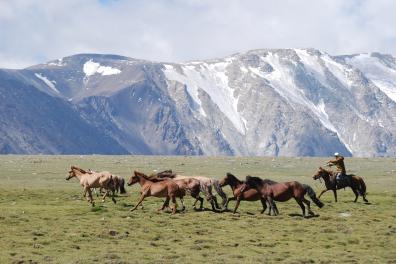Mongolian
This page has been translated automatically.
The Mongolian language is spoken by around 6 million people, forming more or less homogeneous population clusters in Mongolia, China and Russia. The dialects spoken by these groups naturally vary considerably, but these differences do not call into question the deep-rooted common identity. The same applies to culture, with the affirmation of a "Mongolness" that has resisted dispersion and political divisions, but also the passage of time.
The Mongolian language is spoken by around 6 million people, forming more or less homogeneous population clusters in Mongolia, China and Russia. The dialects spoken by these groups naturally vary considerably, but these differences do not call into question the deep-rooted common identity. The same applies to culture, with the affirmation of a "Mongolness" that has resisted dispersion and political divisions, but also the passage of time.

For more information on the Mongolian master's degree, please contact Ms View e-mail, head of the Mongolian section.